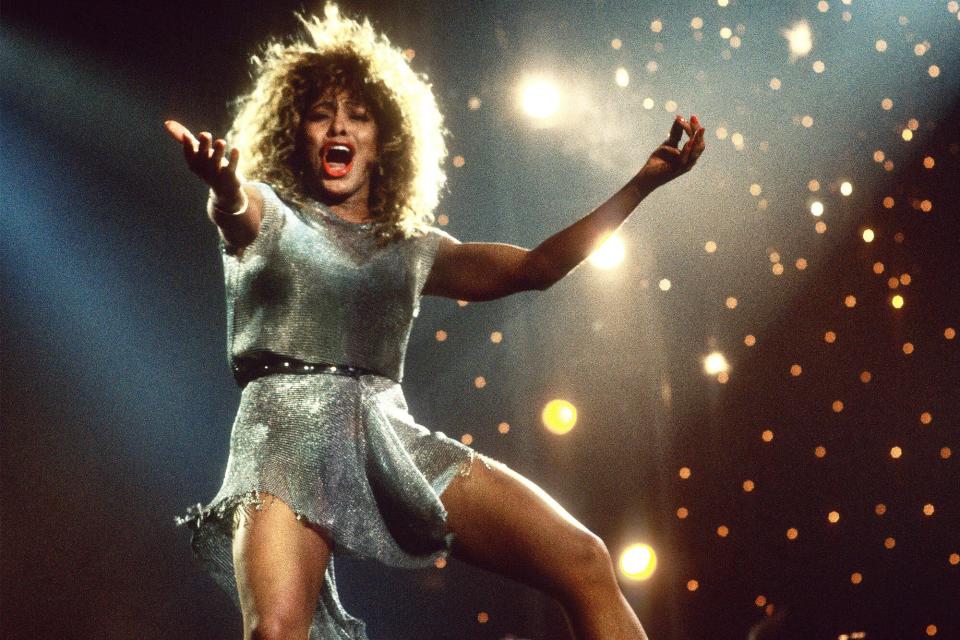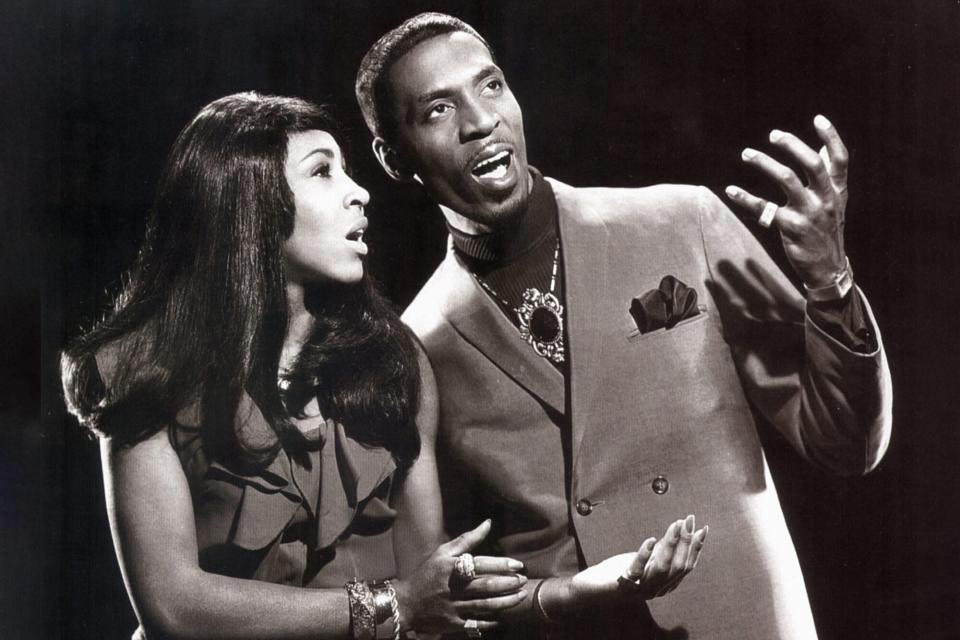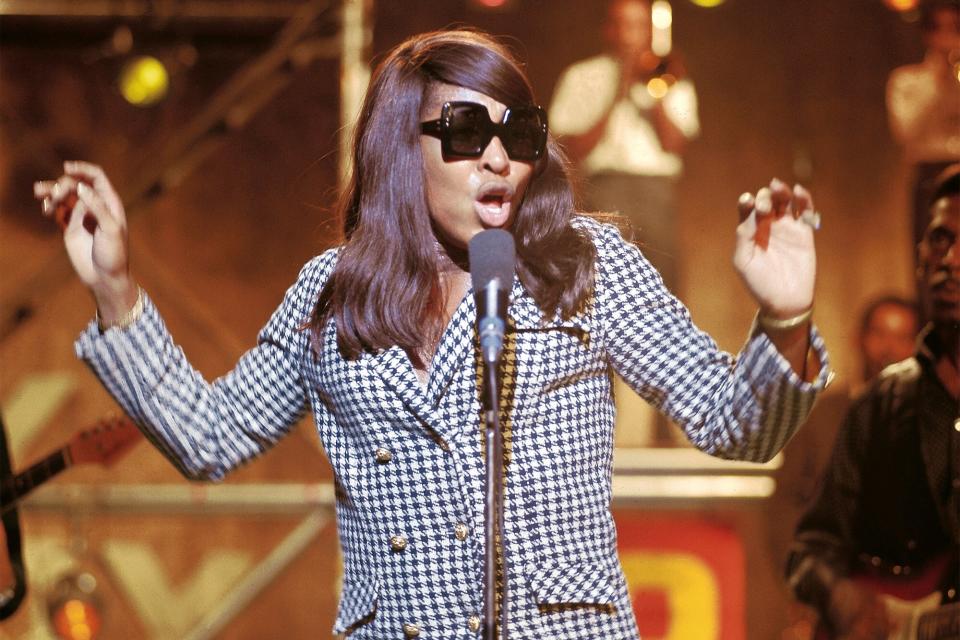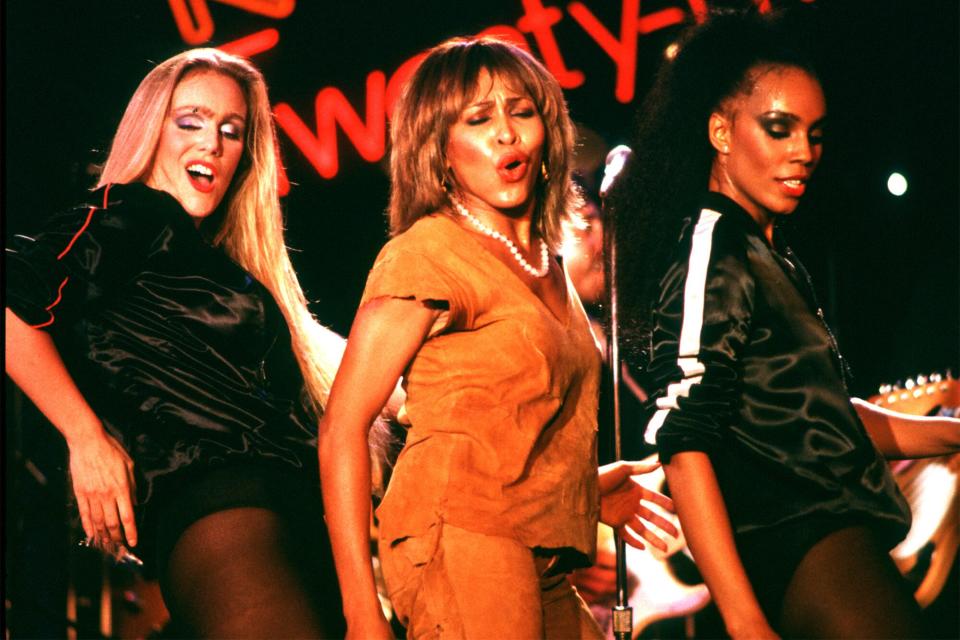On Tina Turner and what it meant to be the Queen of Rock & Roll
- Oops!Something went wrong.Please try again later.
- Oops!Something went wrong.Please try again later.
- Oops!Something went wrong.Please try again later.
Tina Turner was a woman. She was a Black woman. She was a human being.
It's easy to forget that someone so monumental is also human. Because humans have to die — it's part of the deal. But when someone like Tina Turner dies… it doesn't feel quite fair.

Rob Verhorst/Redferns Tina Turner, c. 1990
She is a monument.
I say that in the present tense because when someone like Tina Turner dies, their memory lives on, eternally. As the Queen of Rock & Roll, she was the last living monument to the contributions and the sacrifices that Black people have made to rock & roll — until hip hop, the most potent U.S. export.
Turner was inducted into the Rock and Roll Hall of Fame twice — first as part of the duo Ike & Tina Turner, with her ex-husband, in 1991, and then as a solo act in 2021. Ike and Tina released their first record, "A Fool in Love," in 1960. Turner was just 20, but she arrived sounding like a fully formed hurricane, growling, "What you say?! Hey, hey, hey, hey, heeeeeeeey!"

GAB Archive/Redferns Ike and Tina Turner, c. 1965
Her voice was a spiritual successor to that of Big Mama Thornton, Sister Rosetta Tharpe, LaVern Baker, and many other Black women who laid the foundations of rock & roll. On wax, Turner was explosive. In concert, she was out of this world.
Much has been made of Mick Jagger learning his moves from Turner. But with all due respect to Jagger, he could literally never. At 70, during her 50th Anniversary Tour, she was still a whirling dervish of miniskirts, fringe, sequins, and legs for days.
At a time when Black artists were more closely identified with soul and R&B, Ike and Tina were rockin' and rollin' down the river. Their most famous song, "Proud Mary," was an infinitely superior cover of the Creedence Clearwater Revival song.
Ike and Tina's output, from 1960-1976, featured some of the most dynamic, hip-shaking, earth-shattering music ever put to tape, climaxing with 1966's "River Deep, Mountain High" — if "epic" were a song.
Produced and cowritten by rock pioneer and noted abuser Phil Spector, "River Deep, Mountain High" was the like the horns of Jericho to Spector's Wall of Sound. Spector considered it the greatest record he ever produced, and everything crumbled in its wake.

David Redfern/Redferns Tina Turner, c. 1966
Ike Turner's contributions to rock are often overshadowed by the nightmarish abuse he unleashed upon his wife, but what he and Turner did together changed the course of music. Similarly, Turner's contributions are often overshadowed by that abuse, her story reduced to that of a victim.
The period between her split from Ike and her massive 1984 comeback with her album Private Dancer rarely gets much attention, but this is my favorite Tina Turner era. This was Tina slumming it on Hollywood Squares, Tina popping into The Sonny and Cher Show to hang out in matching Bob Mackies with Cher. This was disco Tina, Tina struggling to find her way and forge a new path on her own terms. This was Tina the survivor.

kpa/United Archives via Getty Tina Turner, c. 1970s
Through it all, she kept a fire that always burned brighter and hotter than Ike could handle. When she did make her triumphant return at 45, at an age when fame — Hollywood, the music industry — has usually sucked a woman, particularly a Black woman, dry, she had already been the Queen of Rock & Roll. Private Dancer was the re-coronation, for anyone who had forgotten.
Record execs dismissed Turner for her age, her race, her gender — but you don't count out Tina Turner. Private Dancer smoothed out and glossed up her sound, giving it a mainstream-pop sheen, but songs like "Show Some Respect" and "Better Be Good to Me" proved she hadn't lost the ferocity she had let loose on "A Fool in Love."

Michael Ochs Archives/Getty Tina Turner, c. 1984
The album went on to sell 12 million copies worldwide, win four Grammys, and establish Turner as one of the biggest live acts in the world for decades to come.
The singer's appeal transcended genre, but rock was always her domain, and she reigned over it benevolently. Some Black people may have never heard of CCR, but they knew "Proud Mary." Turner was an access point to music that had been created by Black artists and then co-opted by white artists and white businessmen.

Kevin Winter/Getty Tina Turner, c. 2008
That Tina Turner was the Queen — unrivaled, undisputed, unchallenged — of Rock & Roll meant that Black people could look to her to be reminded where this music came from, how it had developed, what it had given, what it had taken, and the possibilities it possessed.
Heavy is the head that wears the crown, but for more than 60 years Tuna Turner wore it regally. Long live the Queen.
Sign up for Entertainment Weekly's free daily newsletter to get breaking TV news, exclusive first looks, recaps, reviews, interviews with your favorite...stars, and more.
Related content:

